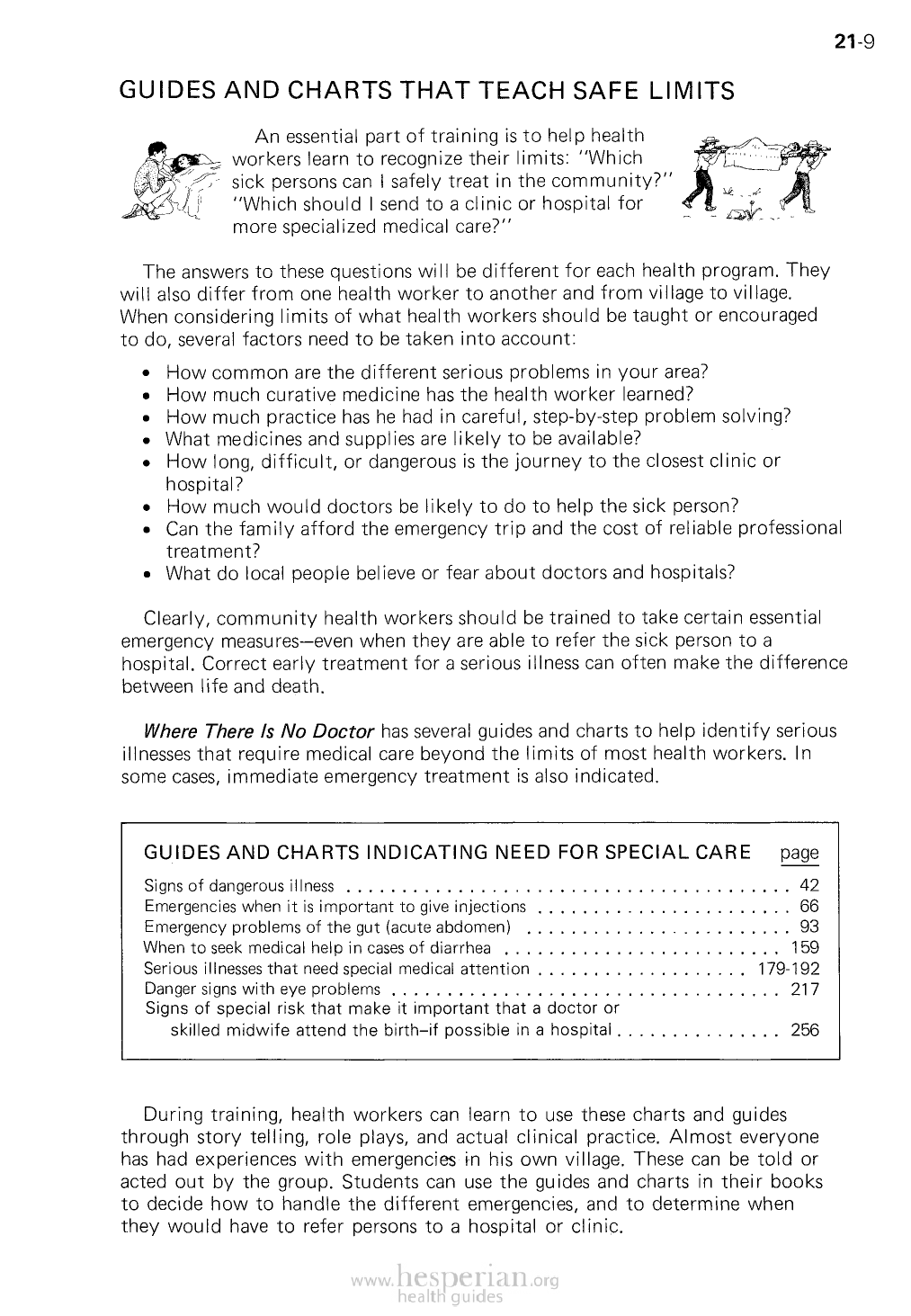
21-9
GUIDES AND CHARTS THAT TEACH SAFE LIMITS
An essential part of training is to help health
workers learn to recognize their limits: “Which
sick persons can I safely treat in the community?”
“Which should I send to a clinic or hospital for
more specialized medical care?”
The answers to these questions will be different for each health program. They
will also differ from one health worker to another and from village to village. When
considering limits of what health workers should be taught or encouraged to do,
several factors need to be taken into account:
• How common are the different serious problems in your area?
• How much curative medicine has the health worker learned?
• How much practice has he had in careful, step-by-step problem solving?
• What medicines and supplies are likely to be available?
• How long, difficult, or dangerous is the journey to the closest clinic or
hospital?
• How much would doctors be likely to do to help the sick person?
• Can the family afford the emergency trip and the cost of reliable professional
treatment?
• What do local people believe or fear about doctors and hospitals?
Clearly, community health workers should be trained to take certain essential
emergency measures—even when they are able to refer the sick person to a
hospital. Correct early treatment for a serious illness can often make the difference
between life and death.
Where There Is No Doctor has several guides and charts to help identify serious
illnesses that require medical care beyond the limits of most health workers. In
some cases, immediate emergency treatment is also indicated.
GUIDES AND CHARTS INDICATING NEED FOR SPECIAL CARE page
Signs of dangerous illness. . . . . . . . . . . . . . . . . . . . . . . . . . . . . . . . . . . . . . . . . . 42
Emergencies when it is important to give injections. . . . . . . . . . . . . . . . . . . . . . 66
Emergency problems of the gut (acute abdomen). . . . . . . . . . . . . . . . . . . . . . . . 93
When to seek medical help in cases of diarrhea. . . . . . . . . . . . . . . . . . . . . . . . 159
Serious illnesses that need special medical attention . . . . . . . . . . . . . . . . . 179-192
Danger signs with eye problems. . . . . . . . . . . . . . . . . . . . . . . . . . . . . . . . . . . . . 217
Signs of special risk that make it important that a doctor or
skilled midwife attend the birth-if possible in a hospita.l . . . . . . . . . . . . . . . 256
During training, health workers can learn to use these charts and guides through
story telling, role plays, and actual clinical practice. Almost everyone has had
experiences with emergencies in his own village. These can be told or acted out
by the group. Students can use the guides and charts in their books to decide how
to handle the different emergencies, and to determine when they would have to
refer persons to a hospital or clinic.